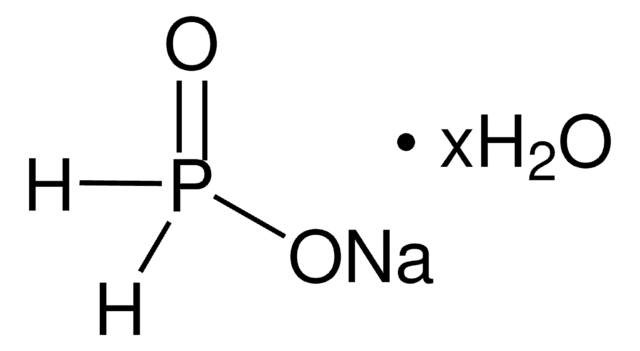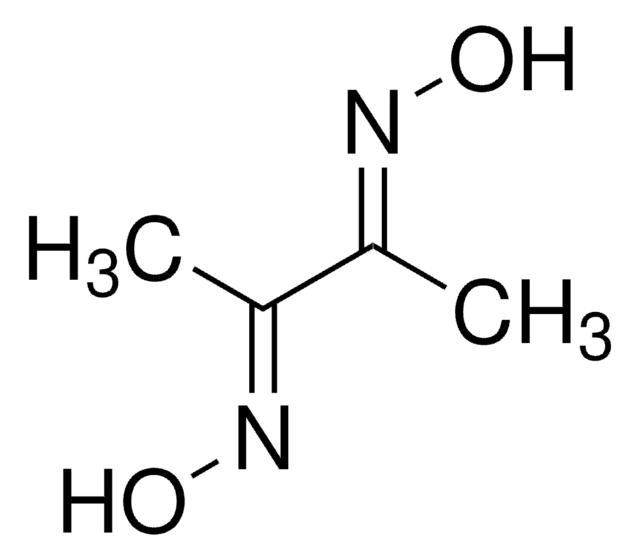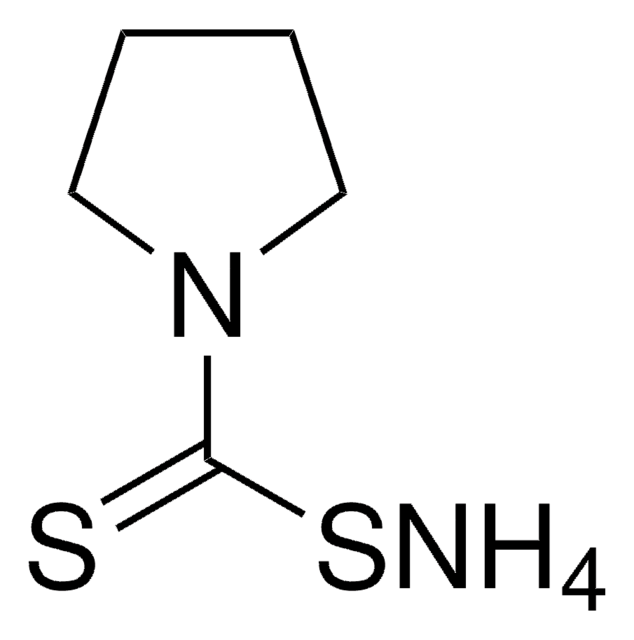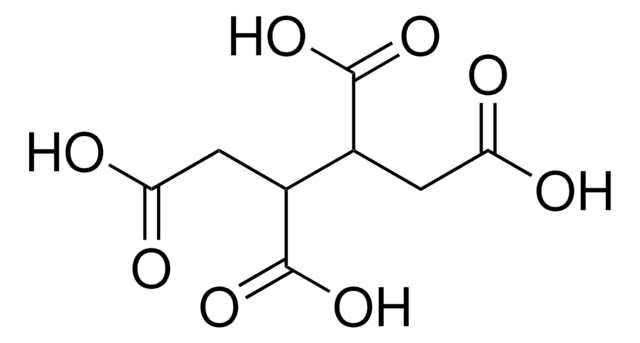Kluczowe dokumenty
04434
Sodium hypophosphite
puriss., meets analytical specification of BPC63, anhydrous, 98-101%
About This Item
Polecane produkty
Poziom jakości
klasa czystości
puriss.
Próba
98-101%
Formularz
powder or crystals
jakość
meets analytical specification of BPC63
zanieczyszczenia
≤0.001% heavy metals (as Pb)
≤0.2% free alkali (as CaO)
strata
≤1% loss on drying, 105 °C, 2 h
rozpuszczalność
water: soluble 909 g/L at 30 °C
gęstość
1.77 g/cm3 at 20 °C
ślady anionów
chloride (Cl-): ≤200 mg/kg
sulfate (SO42-): ≤200 mg/kg
ślady kationów
As: ≤2 mg/kg
Fe: ≤10 mg/kg
ciąg SMILES
[Na+].[O-][PH2]=O
InChI
1S/Na.H3O2P/c;1-3-2/h;3H2,(H,1,2)/q+1;/p-1
Klucz InChI
SIGUVTURIMRFDD-UHFFFAOYSA-M
Szukasz podobnych produktów? Odwiedź Przewodnik dotyczący porównywania produktów
Powiązane kategorie
Opis ogólny
Zastosowanie
- Synthesis and characterization of chitosan-copper nanocomposites and their catalytic properties for 4-nitrophenol reduction.: This study explores the synthesis of chitosan-copper nanocomposites using sodium hypophosphite as a reducing agent. The resulting nanocomposites are characterized and their catalytic properties for the reduction of 4-nitrophenol are evaluated, demonstrating the utility of sodium hypophosphite in catalytic applications (Pang et al., 2024).
- The Durable Chitosan Functionalization of Cellulosic Fabrics.: This research focuses on the durable functionalization of cellulosic fabrics with chitosan using sodium hypophosphite as a cross-linking agent. The study highlights the improved properties of the fabrics, showcasing sodium hypophosphite′s role in textile enhancement (Flinčec Grgac et al., 2023).
- Hypophosphite cross-linked starch succinate/chitosan membranes as alternative for packaging and pharmaceutical application.: The study investigates the development of starch succinate/chitosan membranes cross-linked with sodium hypophosphite, proposing these materials as potential alternatives for packaging and pharmaceutical applications (Bajer, 2023).
- Tensile Strength Improvements of Ramie Fiber Threads through Combination of Citric Acid and Sodium Hypophosphite Cross-Linking.: This research improves the tensile strength of ramie fiber threads by combining citric acid and sodium hypophosphite for cross-linking, demonstrating significant enhancements in fiber properties for industrial applications (Wulandari et al., 2023).
- Nickel-Catalyzed Sodium Hypophosphite-Participated Direct Hydrophosphonylation of Alkyne toward H-Phosphinates.: This study demonstrates a novel nickel-catalyzed hydrophosphonylation of alkynes using sodium hypophosphite. The research showcases the efficiency of sodium hypophosphite in producing H-phosphinates, highlighting its significance in chemical synthesis (Qian et al., 2023).
Kod klasy składowania
13 - Non Combustible Solids
Klasa zagrożenia wodnego (WGK)
WGK 2
Temperatura zapłonu (°F)
Not applicable
Temperatura zapłonu (°C)
Not applicable
Wybierz jedną z najnowszych wersji:
Certyfikaty analizy (CoA)
Nie widzisz odpowiedniej wersji?
Jeśli potrzebujesz konkretnej wersji, możesz wyszukać konkretny certyfikat według numeru partii lub serii.
Masz już ten produkt?
Dokumenty związane z niedawno zakupionymi produktami zostały zamieszczone w Bibliotece dokumentów.
Klienci oglądali również te produkty
Nasz zespół naukowców ma doświadczenie we wszystkich obszarach badań, w tym w naukach przyrodniczych, materiałoznawstwie, syntezie chemicznej, chromatografii, analityce i wielu innych dziedzinach.
Skontaktuj się z zespołem ds. pomocy technicznej










